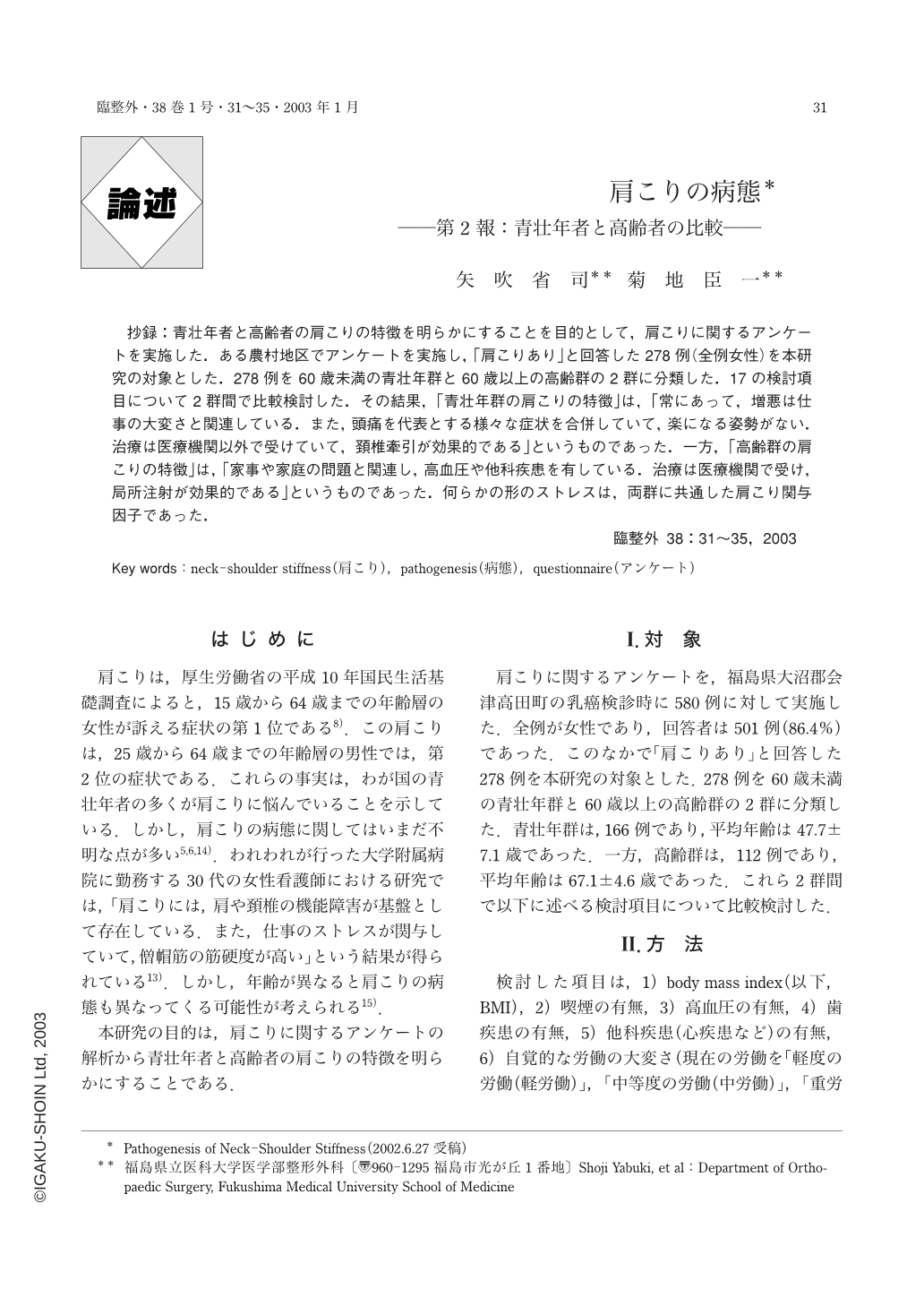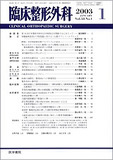Japanese
English
- 有料閲覧
- Abstract 文献概要
- 1ページ目 Look Inside
抄録:青壮年者と高齢者の肩こりの特徴を明らかにすることを目的として,肩こりに関するアンケートを実施した.ある農村地区でアンケートを実施し,「肩こりあり」と回答した278例(全例女性)を本研究の対象とした.278例を60歳未満の青壮年群と60歳以上の高齢群の2群に分類した.17の検討項目について2群間で比較検討した.その結果,「青壮年群の肩こりの特徴」は,「常にあって,増悪は仕事の大変さと関連している.また,頭痛を代表とする様々な症状を合併していて,楽になる姿勢がない.治療は医療機関以外で受けていて,頚椎牽引が効果的である」というものであった.一方,「高齢群の肩こりの特徴」は,「家事や家庭の問題と関連し,高血圧や他科疾患を有している.治療は医療機関で受け,局所注射が効果的である」というものであった.何らかの形のストレスは,両群に共通した肩こり関与因子であった.
The purpose of this study was to identify the characteristics of the neck-shoulder stiffness in adult and elderly patients. The subjects were 278 patients whose answers to a questionnaire on neck-shoulder stiffness were “positive”. The cases were divided into two groups:an adult group (<60 years old) and an elderly group (≧60 years old), and the groups were compared in regard to their replies to 17 questions. The neck-shoulder stiffness in the adult group was characterized by replies of “constant”, “worsened by work”, “associated with many other symptoms,such as headache”, “no comfortable posture” and “cervical traction is effective”. By contrast, the having elderly group was characterized by “worsened by housework”, “having hypertension and other medical problems”, and “local injection is effective”. Various types of stress were factors affecting the neck-shoulder stiffness in both groups.

Copyright © 2003, Igaku-Shoin Ltd. All rights reserved.


